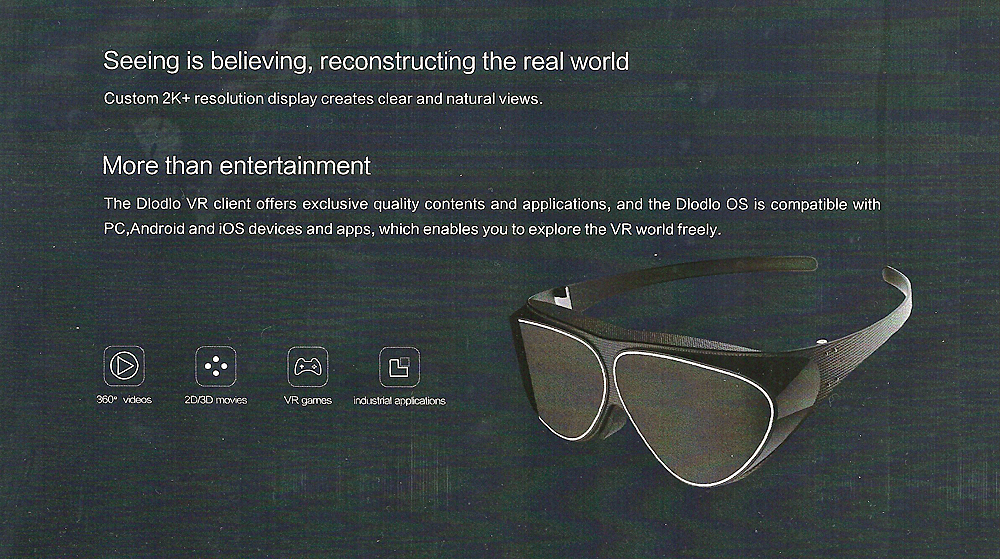
VR Glasses are Light, Stylish, Impressive

August 9 2016
sensors
On August 8, 2016, at The Marriot Marquis in the heart of the theater district in Manhattan, NYC, virtual reality (VR) equipment and platform developer Dlodlo unveiled its first consumer VR product Glass V1. The component was launched as the market’s first wearable VR headset featuring a real glass form design. In other words, it looks like a regular pair of stylish designer sunglasses as opposed to a heavy piece of headgear more commonly found in an optometrist’s office or brain surgeon’s lab.
Glass V1 can link with PC devices, i.e., tablets, smartphones, etc., or an integrated terminal on Dlodlo’s self-developed external interface, called D1.
The glasses are compact and easy to wear. Its sunglass design uses thin and durable carbon fiber along with skin-friendly silicon materials. The 16-mm thick glass that weighs 78g. Specs include a 2,400 x 1,200 resolution, 800+ PPI, 105° field of view, and a 90-Hz refresh rate.
Of particular note, the company’s self-developed prediction algorithm minimizes most of the dynamic delay to greatly reduce the dizziness some users experience when wearing VR glasses. In addition, Glass V1 automatically corrects distortion.
In addition to VR glasses, Dlodlo also operates a VR content platform that features a wide range of 3D videos, VR panorama, and games selections. The platform now streams 658 videos, including 139 3-D movies and 519 VR panorama clips. The platform also introduces 76 independent sports, action adventure, and shooting games such as Basketball, Deep Space Battle, and Lamper.
According to Dlodlo CEO Li Gang, “Dlodlo has been committed to getting more people to enjoy the ultimate virtual reality experience any time and anywhere. By integrating the platforms and resources in hardware, software, application, platform, and community and through the VR glasses, we aim to create a complete VR eco-system, Dlodlo World.”
Having attended the launch, I was given the opportunity to try out the glasses. Initially, images and motion are quite realistic and impressive. Affirming the company’s claim, I experienced none of the dizziness (and nausea) common to some other VR offerings. I can also foresee many highly beneficial applications for Glass VI that go well beyond mere video watching and game playing. I’m sure Dlodlo does as well.
A limited-quantity sale of Glass V1 Developer Version to the public will start at 10:30 AM, September 1, 2016 in Beijing. For more details, visit the company’s website at http://www.dlodlo.com/en ~MD